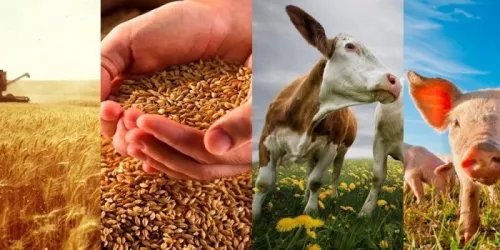Import substitution in the agro-industrial complex is now planned to be developed on the basis of accurate indicators. The Ministry of Agriculture will develop a methodology for calculating the index. The document itself is not yet available, but as approximate calculations show, questions may arise on many major products.
The ministry posted a notification on the development of a methodology for calculating the import substitution index in the agro-industrial complex on the portal of draft regulatory legal acts. The draft methodology itself has not yet been published. But the description states that the index is understood as "the ratio of the cumulative growth rate of agricultural production and the cumulative growth rate of imports of agricultural products."
Previously, they operated with indicators of “self-sufficiency”. Thus, according to the Ministry of Agriculture, given in the final report on the results of the ministry’s activities for 2021, self-sufficiency in sugar was 100.0%, in vegetable oil - 176.6%, in meat and meat products - 100.2%, in potatoes - 90 .4%, for milk and dairy products - 84.0%, for vegetables and melons - 86.9%, for fish - 153.2%.
However, an approximate calculation of the indices based on the available Rosstat data on the growth rates of production and the growth rates of imports of certain types of agro-industrial complex products gives other indicators. If we apply the indicated general approach to calculate the index, that is, calculate the ratio of the production growth rate for 2021 and the import growth rate for the same period, we will obtain the following data.
Milk - 1.24
Meat - 1.21
Poultry meat - 0.94
Fish - 0.92
Sugar - 0.89
Sunflower oil - 0.79
Potato - 0.57
It turns out that, contrary to the above data on self-sufficiency, a favorable situation has developed for milk and meat, and the most difficult situation for vegetable oil and potatoes.
Rosstat data were used for calculations. So, in 2021, the production of cattle meat in physical terms amounted to 100.3% by 2020, poultry meat - 99.3%, milk - 100.5%, processed fish - 101.1%, processed and canned potatoes - 108, 1%, sunflower oil - 84.3%, sugar - 108.3%.
At the same time, Rosstat cites such indicators of the growth rates of imports of certain types of food. Imports of fresh meat and frozen meat in physical terms amounted to 82.8% compared to 2020, poultry meat - 105.8%, fresh and frozen fish - 110.1%, non-condensed milk and cream - 80.9%, potatoes - 172, 7%, sugar - 121.2%, sunflower oil - 107.3%.
However, it is hardly possible to carry out calculations in this form, since natural and climatic factors have a great influence on the indicators of vegetable and potato growing, a representative of the industry, who wished to remain anonymous, explained to Agrotrernd.ru. In the event of crop failure, the volume of imports increases sharply, the index falls. “Besides, in domestic vegetable growing there are no problems to grow vegetables and potatoes, there is a problem to preserve them,” the expert says.
Therefore, the import substitution index needs to be developed for each sub-sector separately, he suggests. For example, for potatoes, it is necessary to take into account not only production volumes, but also storage volumes. Then the index will be more objective, the expert explains.
© Inline LLC 2015-2026. Privacy Policy | Terms of Service